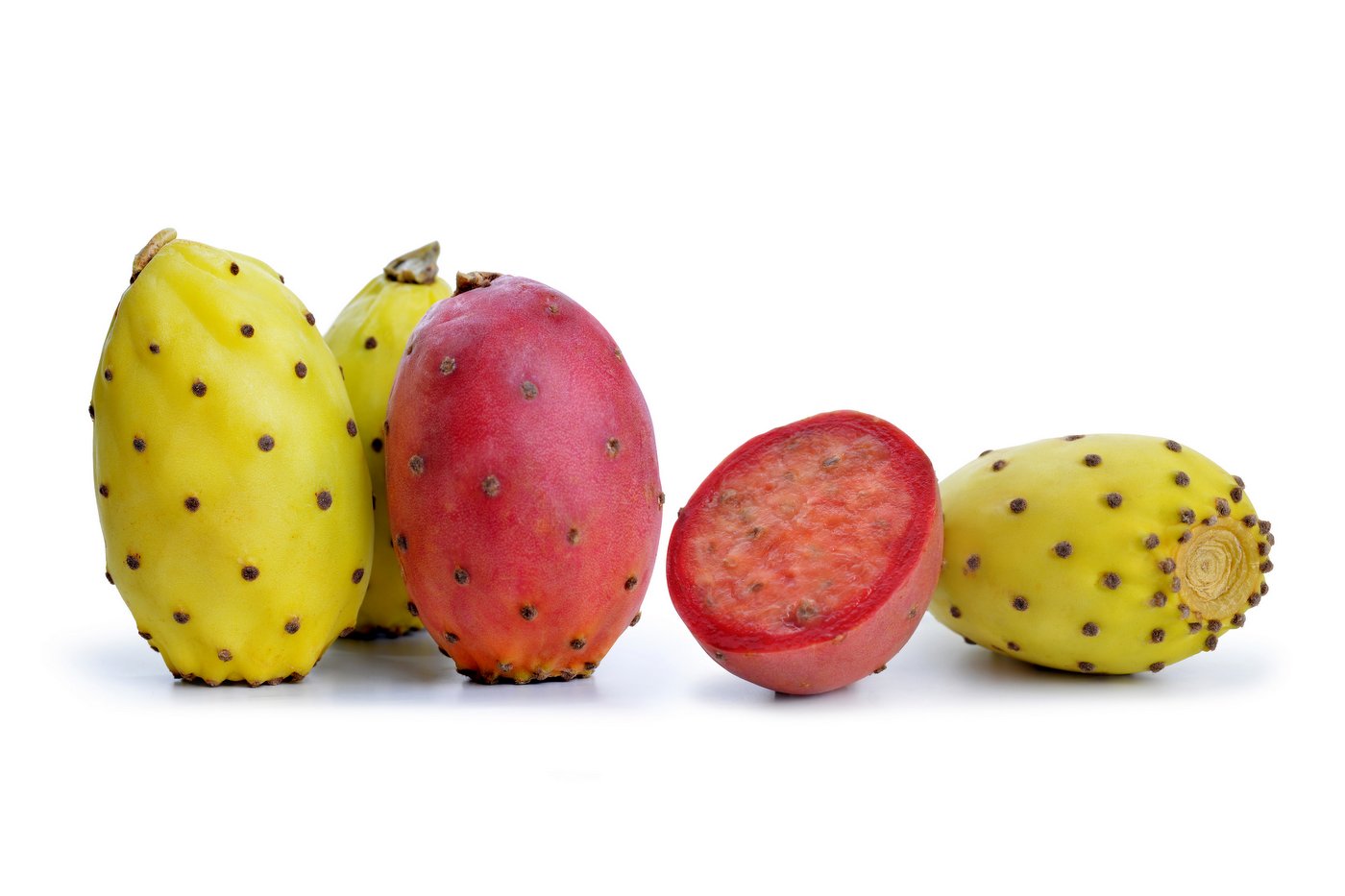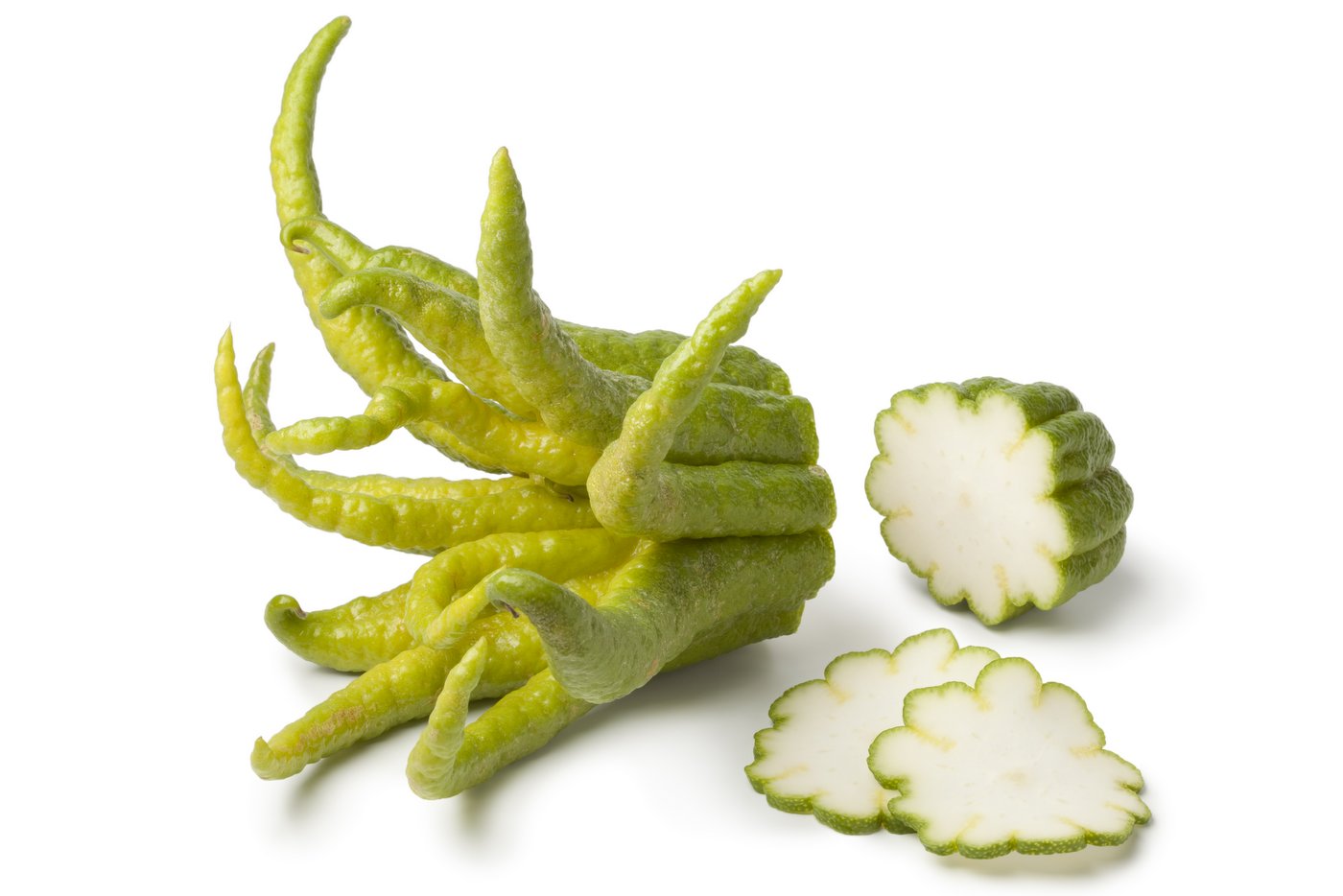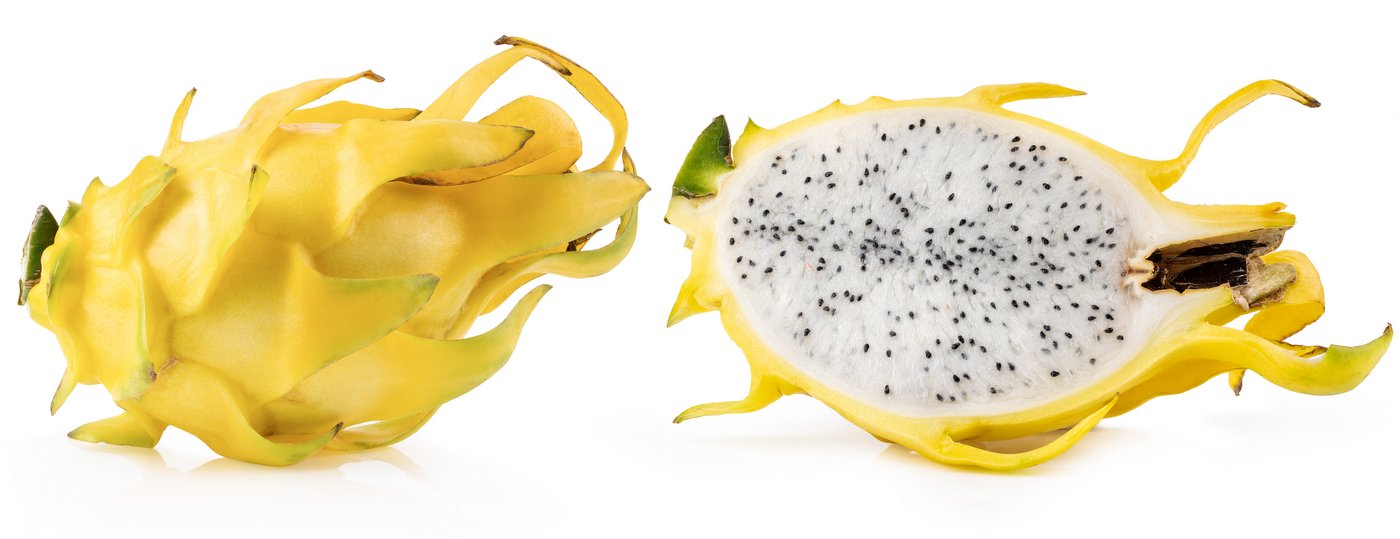Growing up, we had pretty basic fresh fruit options at lunchtime: think apples, oranges, bananas, grapes.
At a picnic, you might get watermelon — and if the family was up for something more exotic, there was always pineapple (especially canned), which had been a big thing since the fifties.
It turns out that we were missing out. Over the decades since we were young, more and more fruits from far-flung places have made their way into our supermarkets, and onto restaurant menus.
Have you tried lychee? Ever seen a dragonfruit? Is your only experience with passion fruit thanks to some shampoo or handsoap?
Outside of occasional appearances on sci-fi TV shows (as food from other planets, you know), many of these exotic fruit options are still a little alien to most people in the US — including the ones actually grown here.
Best tropical fruits (& other exotic fruit)
Below, see what 15 of the best tropical fruits and other exotic fruit choices look like, so you can recognize them the next time you see them on display in the produce aisle at your supermarket, local gourmet shop, or Asian grocery store. Do you have a favorite?
1. Mangosteen
The Mangosteen grows mainly in Southeast Asia, but also can be found in tropical South American countries, as well as in Puerto Rico.
The fruit of the mangosteen is sweet and tangy, juicy, fragrant and somewhat fibrous, with fluid-filled pieces — a lot like you’d find in an orange). The deep reddish-purple rind that appears when ripe is considered inedible.
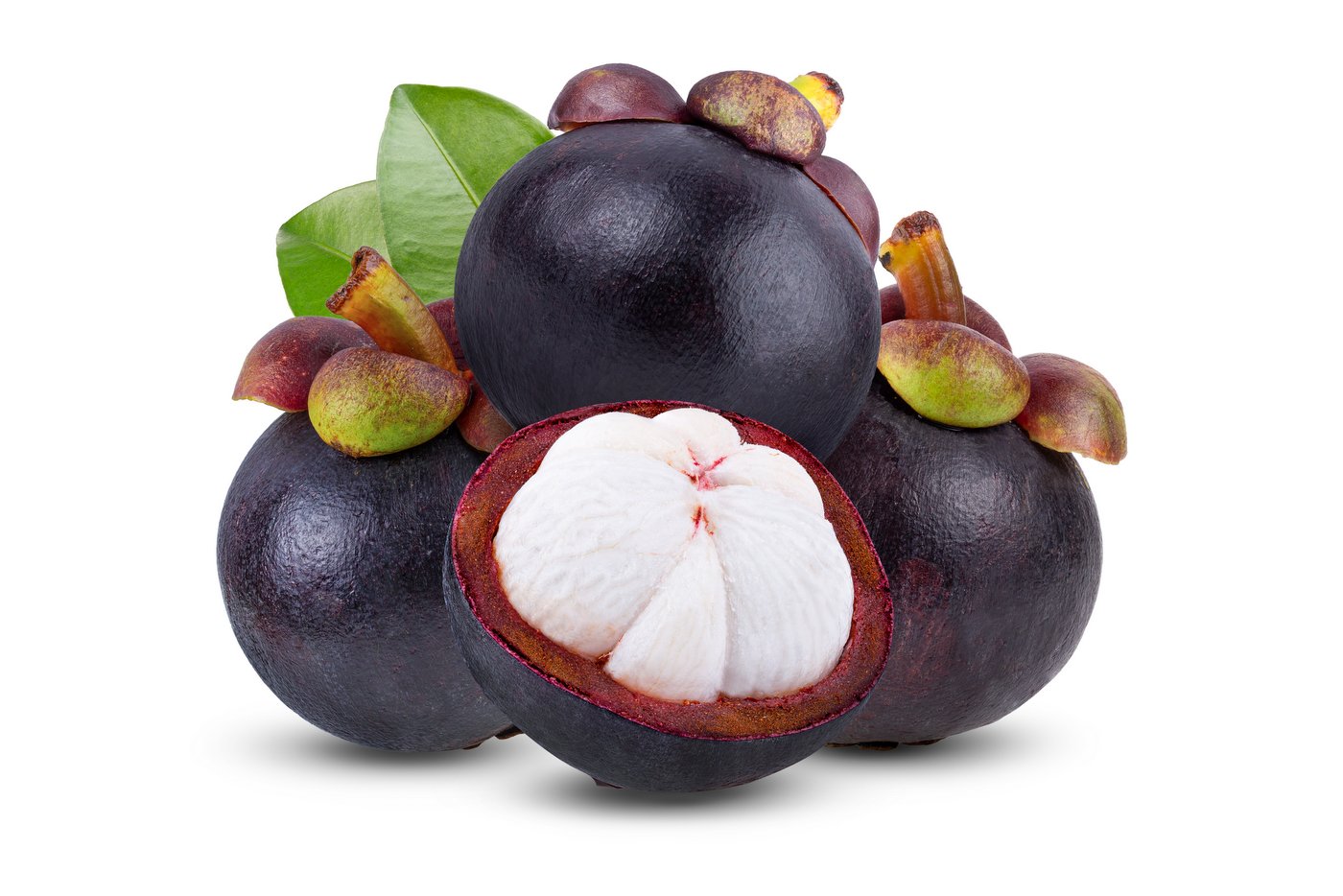
2. Durian fruit
Some people call it the “corpse fruit” because of its strong, distinctive odor. That should tell you something.
Anthony Bourdain once said that the durian’s flavor is “indescribable, something you will either love or despise… Your breath will smell as if you’d been French-kissing your dead grandmother.”
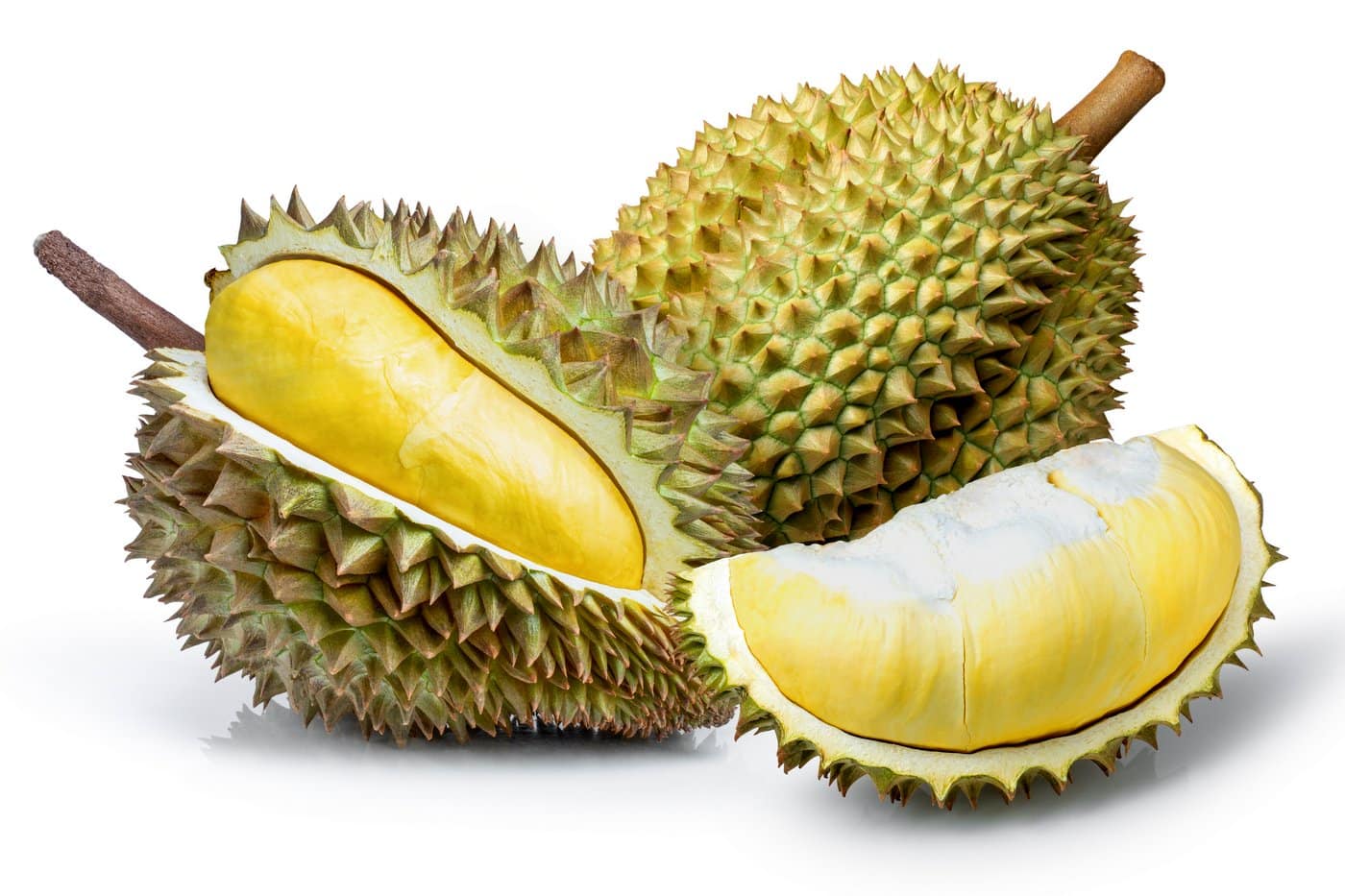
6. Passion Fruit/Granadilla
Available in pink and yellow, the passion fruit’s seeds are crunchy and covered in a sweet slimy film.
In Brazil, the purple passion fruit is typically used for eating, while the yellow version is more commonly used for juice and jams/preserves.

7. Rambutan
This weird little hairy-looking thing is apparently nearly as common as an apple — at least to people in Malaysia, Thailand, Vietnam and the Phillippines.
The juicy white fruit is somewhat similar to a grape, and a lot like its cousin, the lychee (seen below). The seed in the middle is bitter, so you’ll want to avoid it.
Native to Malaysia, the name rambutan comes from the Malay word for hair: rambut.
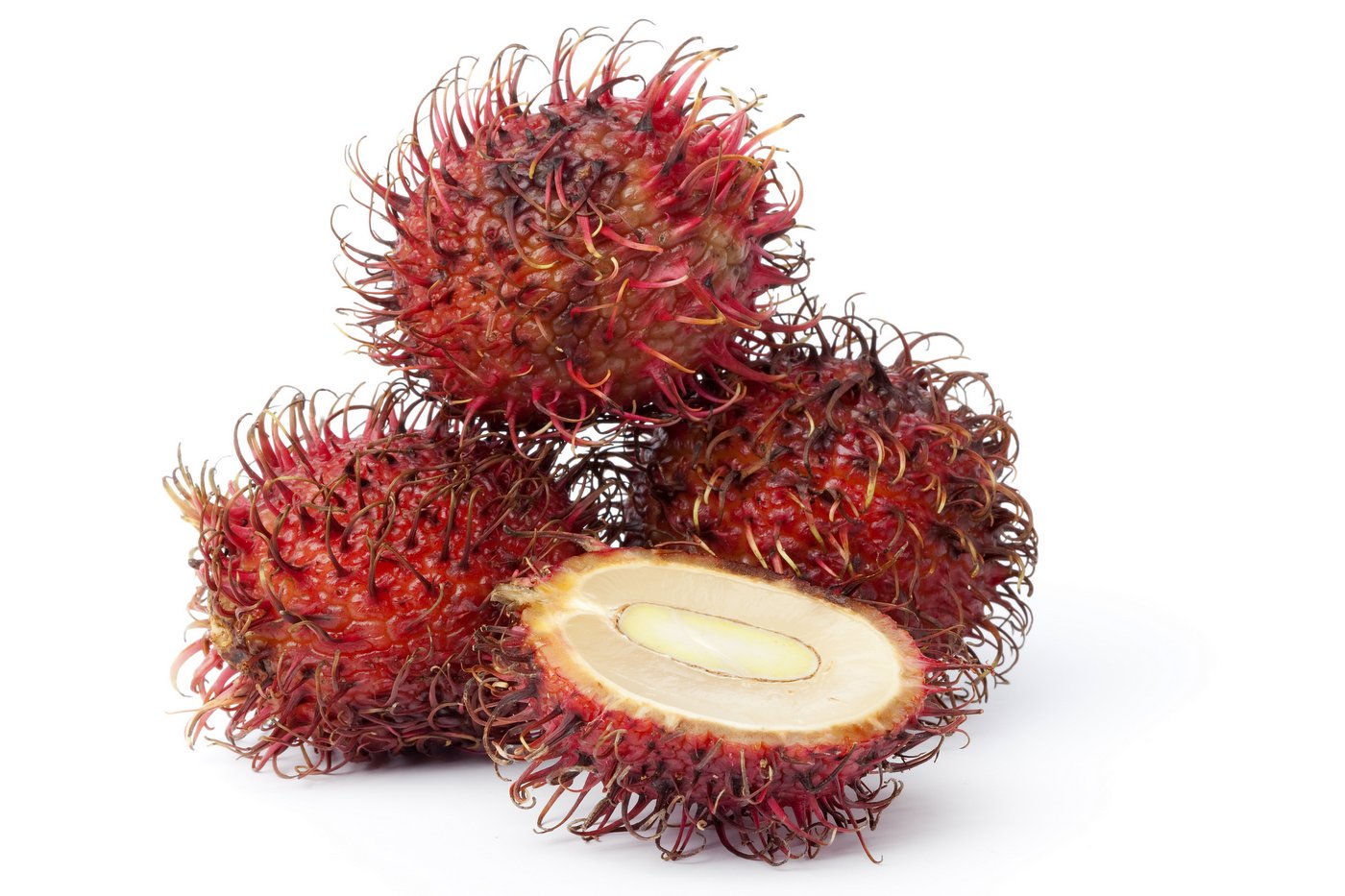
2. Lychee fruit
The lychee (Litchi chinensis) was first introduced into Hawaii more than 100 years ago, but has been cultivated in China for nearly 4,000 years.
Peeled before it’s eaten, the juicy, golf-ball-sized fruit inside is a translucent white, and tastes both sweet and tart. Because of how the outside looks, the lychee is also known as the alligator strawberry.
According to the Purdue University College of Agriculture, this exotic fruit seems to be used a lot like pears were back in the 50s and 60s — stuffed with cottage cheese or a cream cheese/mayonnaise blend… or suspended in lime jello and served on a bed of lettuce with a little mayo on the side.
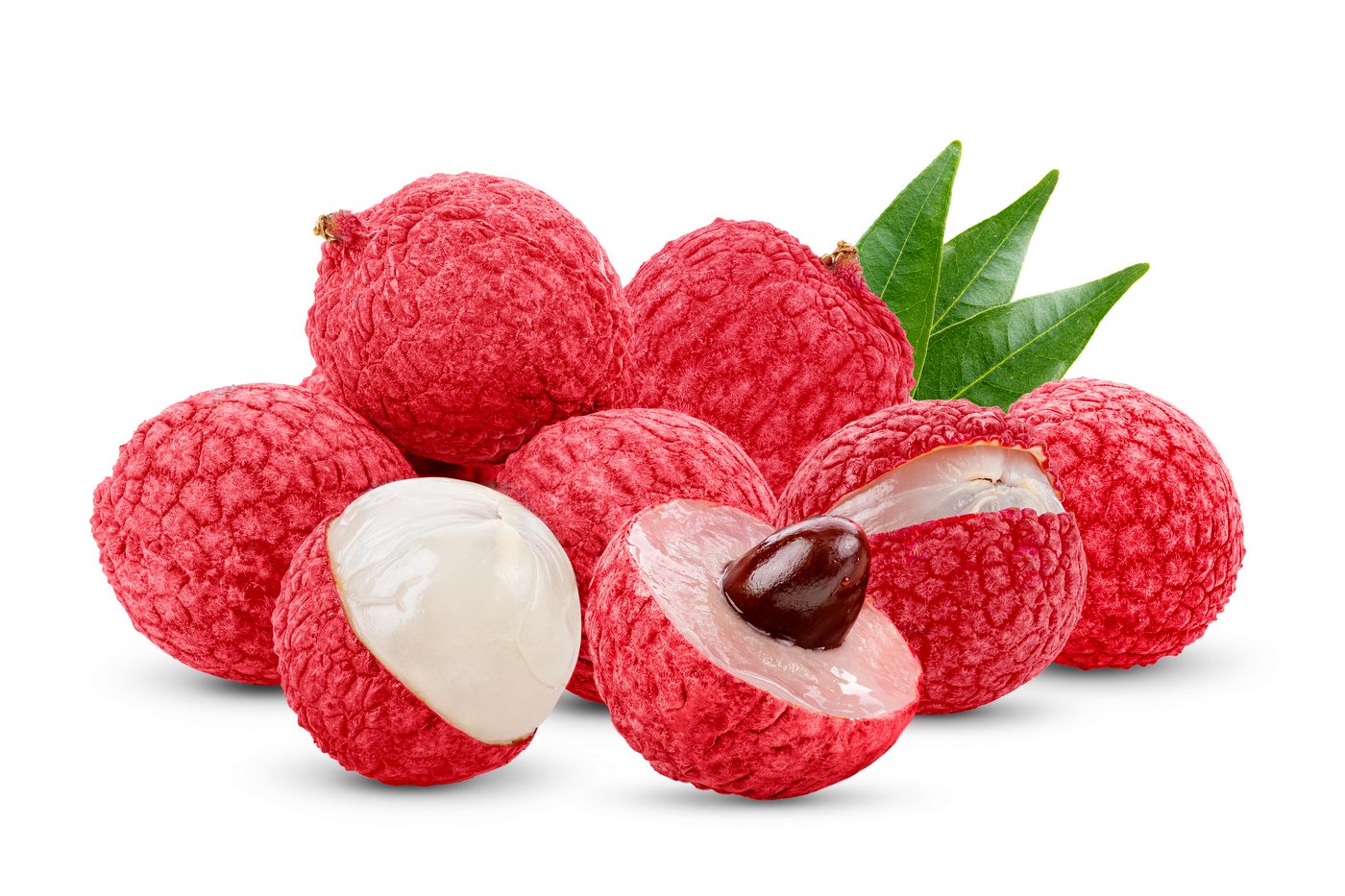
3. Pineberries (white strawberries or hula berries)
Pineberries are much smaller than the strawberries we are used to seeing today, but what makes the pineberry so distinct is its white flesh studded with red seeds — almost an inversion of the typical strawberry.
Says European soft fruit suppliers VitalBerry BV, “The aroma and flavor of pineberries never disappoints — the striking berries have a pineapple flavor.”
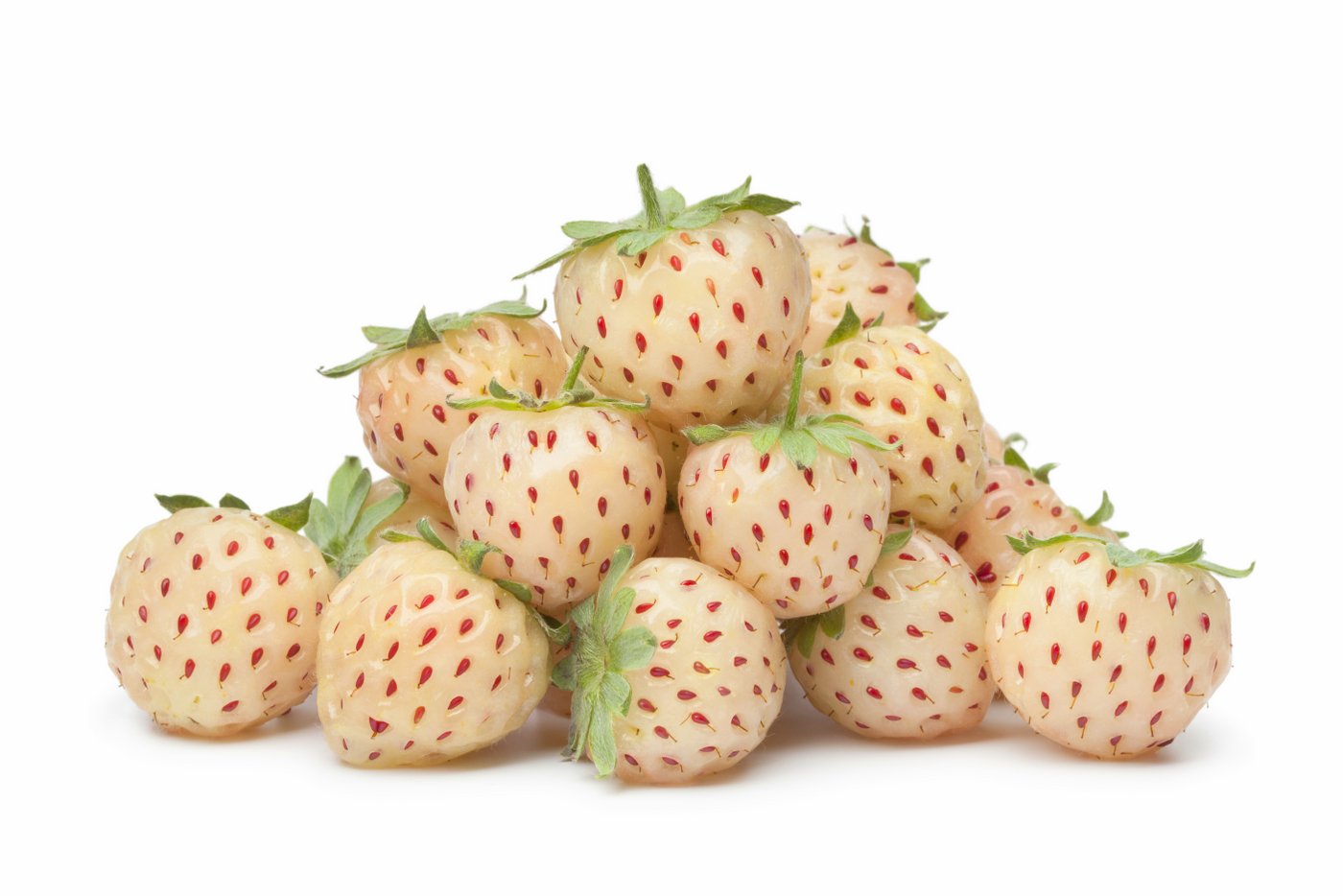
7. Jackfruit
The Jackfruit is a tropical fruit native to parts of South and Southeast Asia, and is believed to have originated in the southwestern rain forests of India.
Now it’s widely cultivated and a popular food in tropical regions of India, Africa and Asia — and is even the national fruit of Bangladesh.
And this baby is big. It’s the largest tree-borne fruit known, and can grow up to 80 pounds, 36 inches long, and 20 inches in diameter.
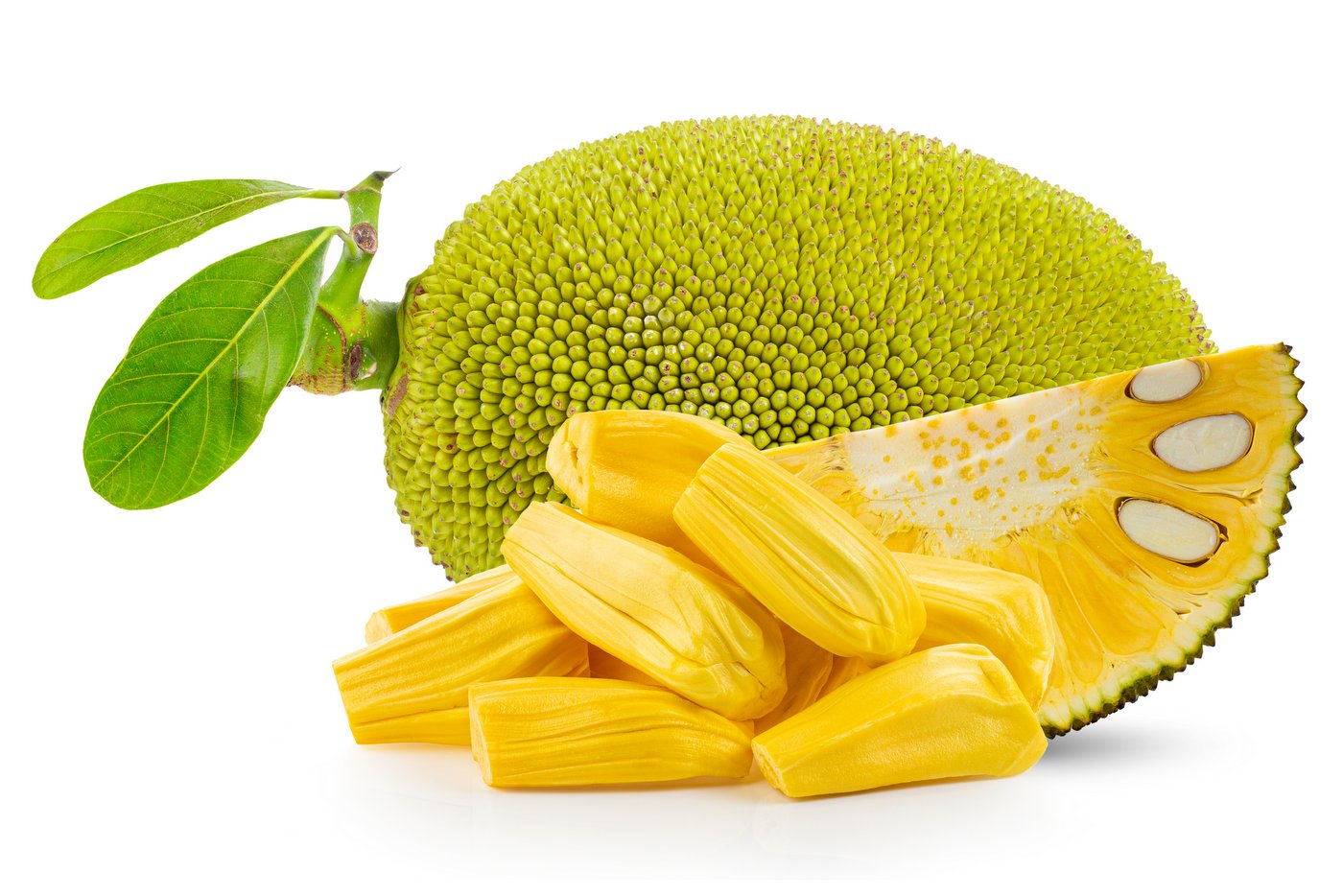
8. Snake fruit (salak)
Named “snake fruit” for its scaly skin, the taste usually has a sweetly acidic taste, and an aroma that may remind you of bananas, pears and pineapple.
This exotic fruit is not juicy — instead, it has a more dry, crumbly texture.

9. Buddha’s Hand fruit
This ancient, strange exotic fruit called Buddha’s hand (aka Citrus medica/bushukan/fingered citron) is a fragrant variety of the lemon-like citron, with fruit is segmented into finger-like sections. It comes in yellow and green varieties.
Where’s it from? Its origin has been traced back to Northeastern India or China.
10. Dragonfruit: Yellow outside, white inside
The Dragonfruit (pitaya fruit) comes from a climbing-vine cactus species that’s native to the tropical forest regions from Mexico down through South America.
The yellow or pink outside skin looks pretty wild — and definitely is distinctive. Inside, the fruit can be white or pink, and is dotted with tiny black seeds.
Dragonfruit’s popular because of its high antioxidant properties — and some fancy restaurants use it for its unique taste and exotic beauty.
It’s also versatile — you can eat this tropical fruit fresh, turn it into juice or jam, or use it in everything from ice cream to cocktails.
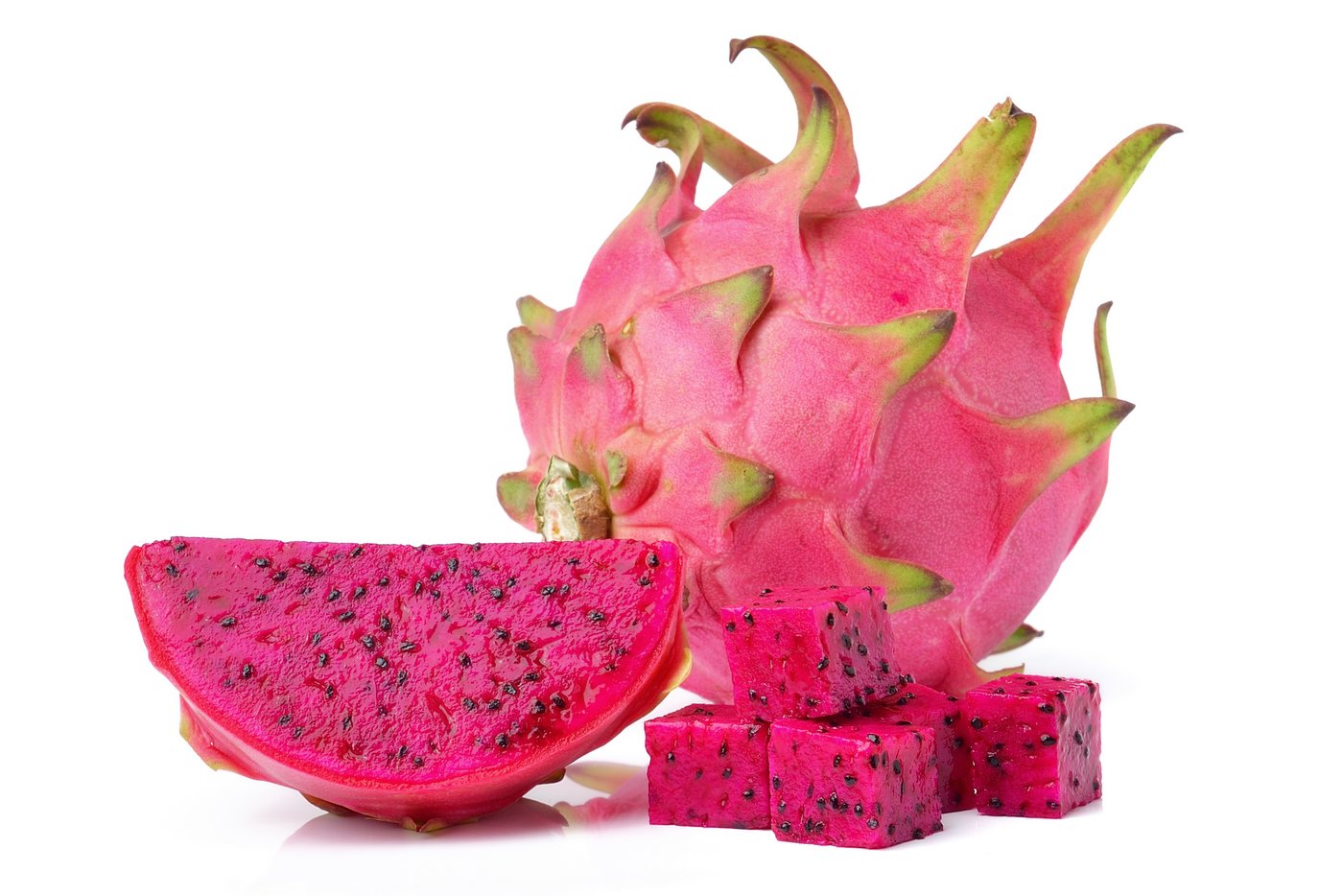
11. Star fruit (carambola)
The starfruit looks very distinctive when whole, but it really shines when you slice it crosswise into gorgeous star-shaped segments.
With a thin skin, carambolas can be eaten whole, and come in sweet and tart varieties.
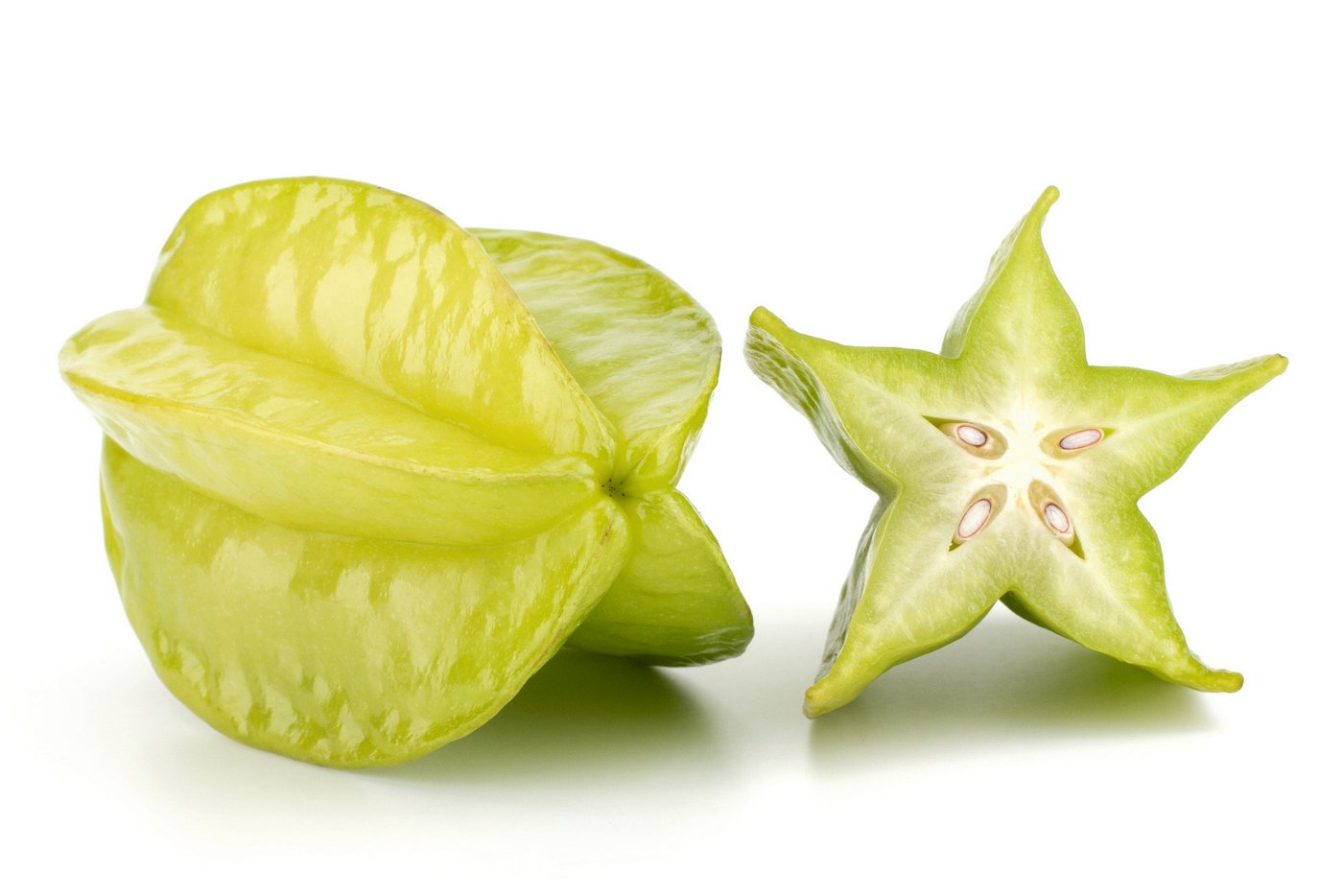
12. Cherimoya / Custard Apple
None other than author Mark Twain called the cherimoya “the most delicious fruit known to men.”
The white pulp of this exotic fruit offers a mild flavor likened to a blend of banana, vanilla, mango, papaya, pineapple or coconut, according to SpecialtyProduce.com.
The fruit experts go on to say that the refreshing texture is soft, smooth and melting, and the flesh is studded with large, black, inedible seeds. “Almost custard-like, is also known as the custard apple.”

13. Brazilian Grape/Jabuticaba
What’s really wild about the jabuticaba (Myrciaria cauliflora) is that these dark blue/purple spherical fruits grow directly on the trunk and branches of the tree, like this:
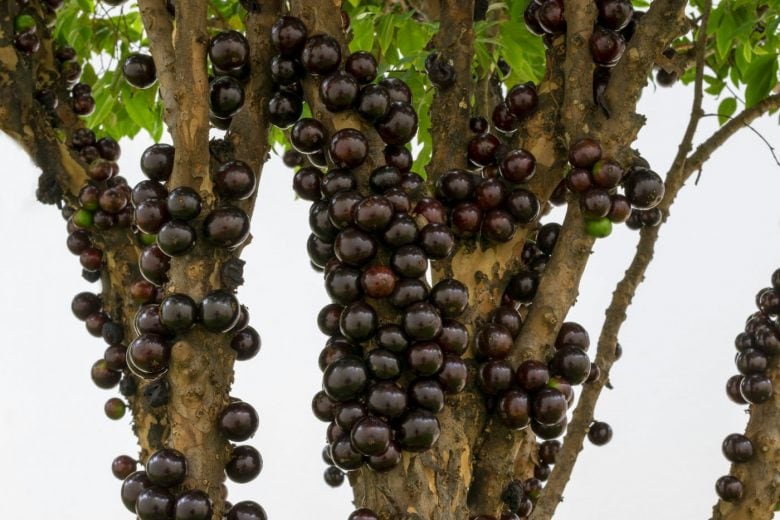
Brazilian grapes are a lot bigger than the typical grapes found in North American supermarkets, but taste similar to several varieties, such as muscadine.
These supersized orbs are consumed both raw and cooked, and pack a lot of antioxidants and nutrients.
In South America, they’re popularly used in jams and wine. That may be the only way you ever see it outside of its native land, because the fruit doesn’t last long at all, making it all but pointless to export.
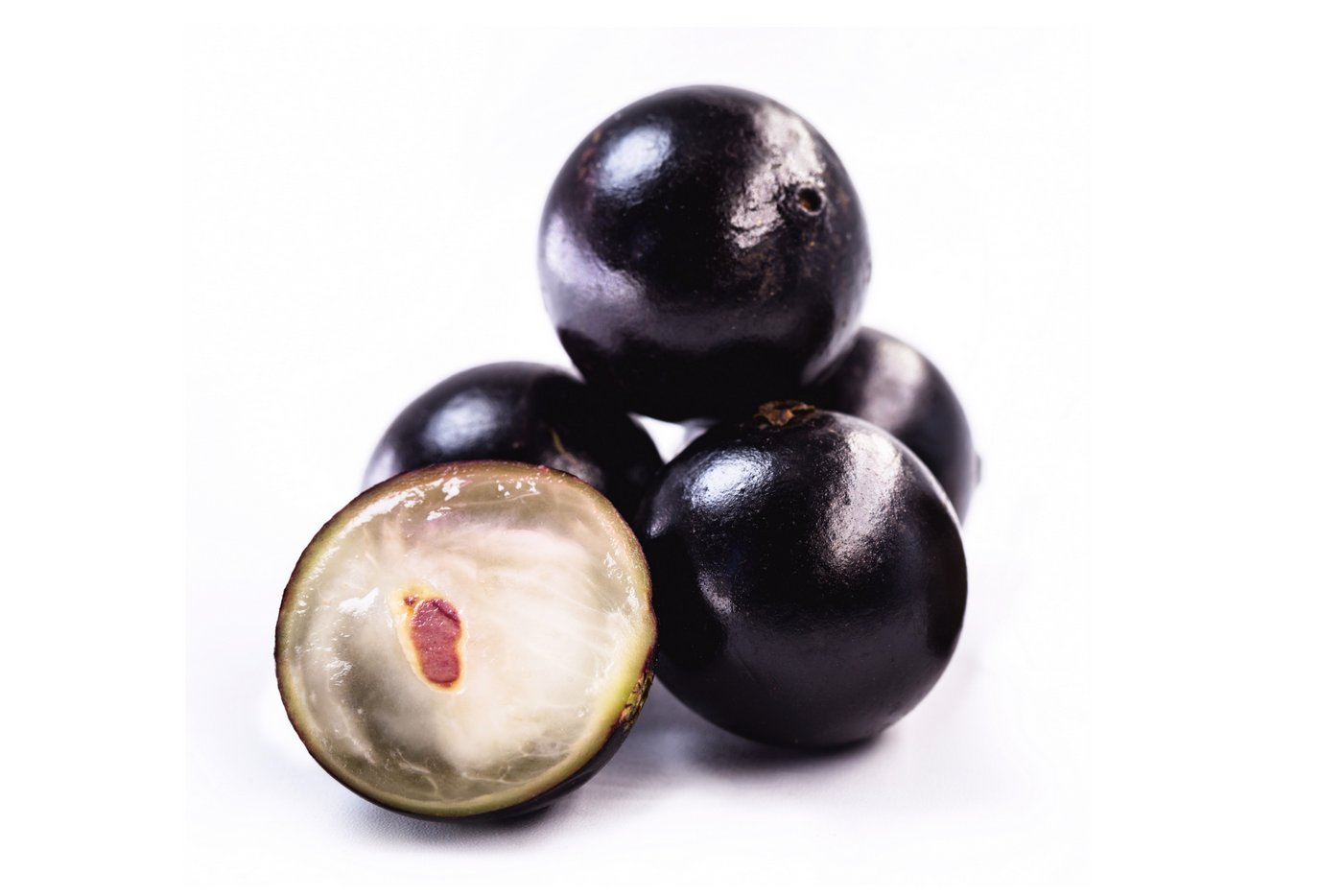
14. Horned Melon/African Cucumber
The melon has a sweet and tart, banana-lime taste — a flavor which is enhanced when chilled, say the experts at SpecialtyProduce.com, adding that the brighter the orange skin, the sweeter the flesh of the fruit.
The horned melon is the size of a large pear, and generally weighs less than one pound. Both the seeds and the flesh are edible.
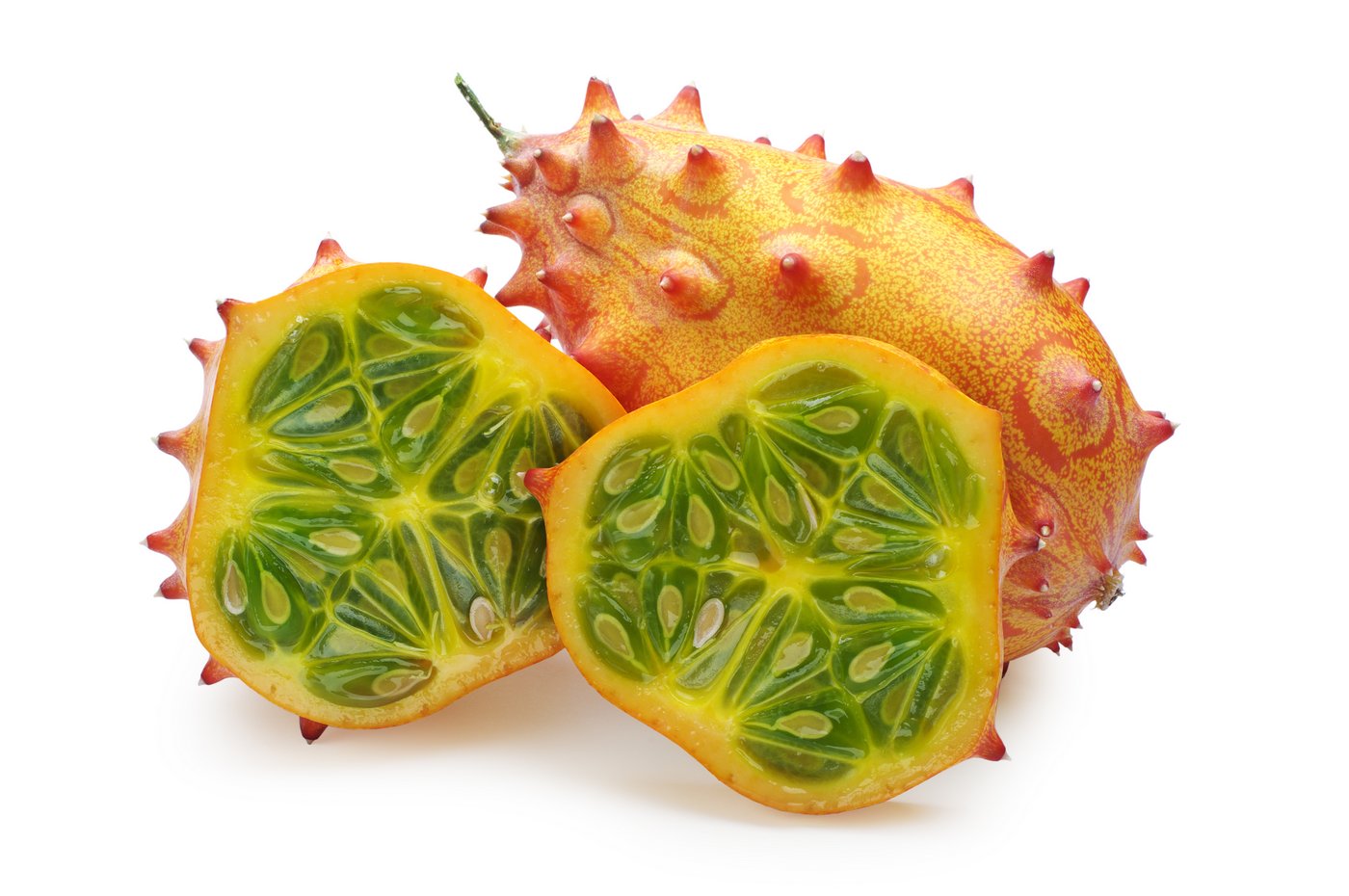
15. Prickly pear (cactus fruit)
Prickly pears, found on paddle-shaped cactus plants, were originally native only to the Americas.
Therefore, it’s not truly exotic for Americans, because these fruits are found all over several Southwestern states — even if they aren’t often eaten.
In Arizona, the fruit juice or puree is sometimes used in specialty cocktails and other beverages, as well as made into preserves or jelly.
